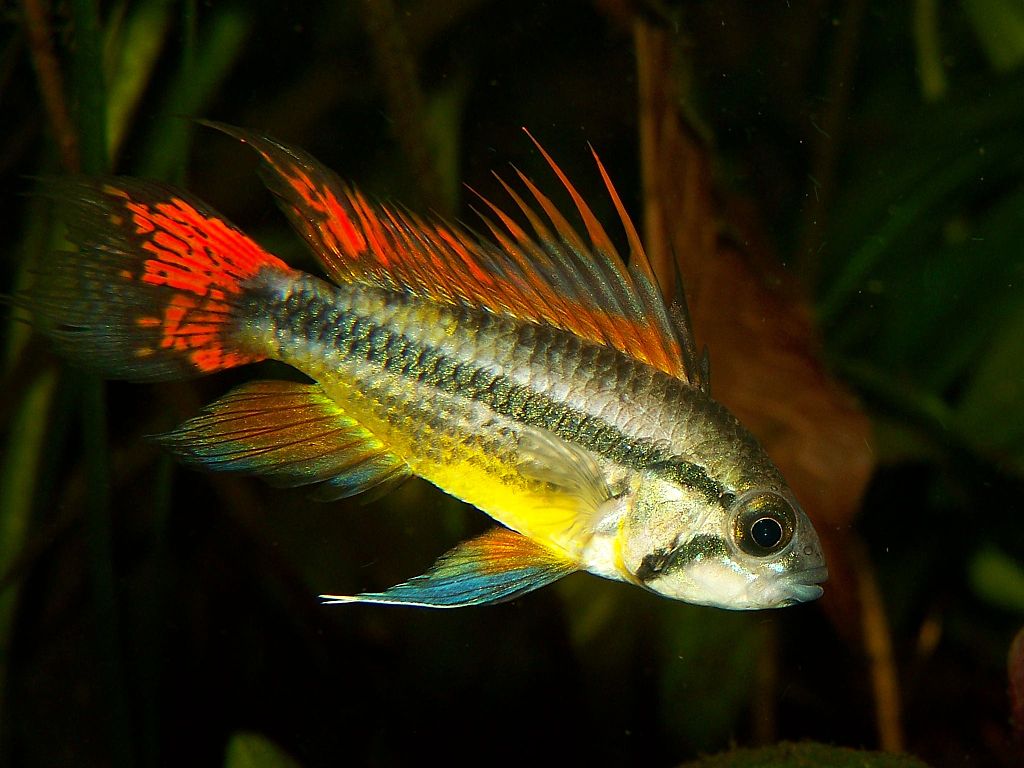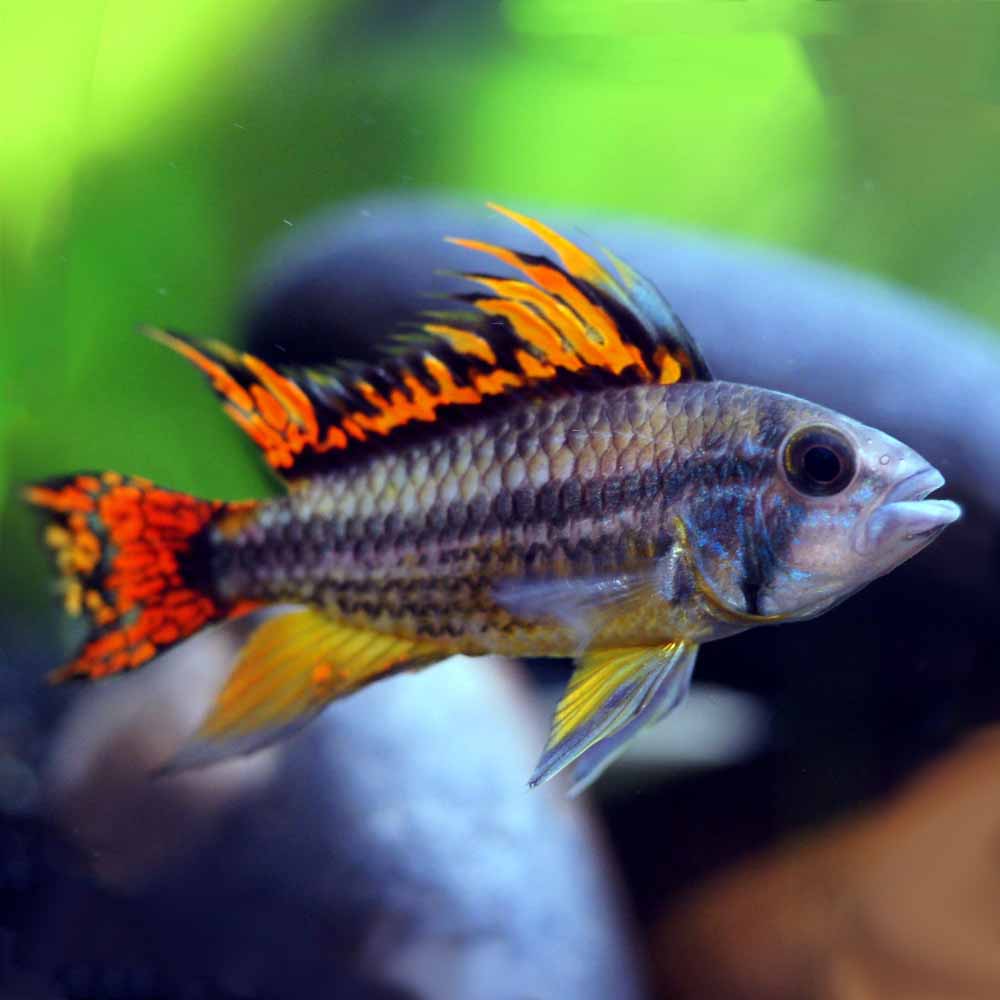

Fish with cotton wool disease have a pale, raised patch on their bodies and frayed, milky fins. There are several diseases that affect African cichlids:Ĭotton wool disease is caused by a type of bacteria called flavobacteria. Adhering to these priorities will prevent disease, aggression, and stress in the tank. There are two priorities when looking after African cichlids: keeping the water clean and nitrate-free, and ensuring that the fish have enough space to claim their own territories.
#Cockatoo cichlid plus
The ideal tank conditions for African cichlids are: Water type: Moderately hard, tropical freshwater Tank size: Minimum 30 gallons, plus 5 gallons per extra fish Water temperature: 75–85☏ Substrate: Fine, soft sand Tank setup: Plants, rocks, caves, hollow decorations Acidity: 7.8–8.6 pH Water hardness: 12–30 dGH Filter: Yes, to keep the tank clean and reduce nitrates Pump: Not essential – African cichlids don’t require a strong current Bubbler: No, African cichlids don’t need additional oxygen Lighting: Yes, standard aquarium lighting can be used to encourage plant growth and highlight the fish’s beautiful colors Water heater: Yes, to maintain a warm, tropical water temperature The best plants for an African cichlid tank are deep-rooted plants like hornwort, Java moss, anubias, and anacharis. African cichlids are a busy species, spending their waking hours scavenging the substrate for food.Īdd furniture, plants, and caves to the aquarium to provide hiding places and territorial spots for African cichlids. African cichlids are active and require plenty of swimming space, as well as lots of cavities and hiding places to claim as their territories.Īs diurnal fish, African cichlids are more active in the day than the night and swim quickly around the bottom and mid-sections of the tank. Typical BehaviorĪfrican cichlids exhibit territorial behaviors like chasing and nipping, especially when housed in a crowded tank. African cichlids become duller than usual when exposed to poor water conditions, including high ammonia and nitrate levels. Females have rounder bellies than males when viewed from above. Male African cichlids are bolder and brighter than females, especially during breeding season. The majority of African cichlids have albino variations, with pinkish-white or yellowish-white bodies and red eyes. Mbuna cichlids: Blue, yellow, or orange bodies with horizontal black stripes on the head and vertical black stripes on the body.Giraffe cichlids: Blue heads with golden yellow bodies and brown giraffe-like splotches.Buffalo head cichlids: Prominent foreheads and camouflage bodies, including black, blue, green, and gray.Kribensis cichlids: Slim bodies in a variety of color morphs including red, yellow, green, silver, and blue.Bumblebee cichlids: Elongated yellow bodies with black vertical stripes that resemble a bumblebee.


Demasoni cichlids: Dark blue bodies with black and light blue vertical stripes.Electric yellow cichlids: Bright yellow coloration with whitish-yellow bellies.Electric blue cichlids: Vibrant blue, iridescent bodies with paler heads than bodies.Frontosa cichlids: Light blue, whitish, or gray bodies with five or more black vertical stripes.Zebra cichlids: Stripy black and white with several color morphs, including blue, orange, red, and yellow.Maingano cichlids: Blue bodies with a horizontal black stripe and black fringed fins.Peacock cichlids: Bright yellow, red, blue, gold, or purple bodies.


 0 kommentar(er)
0 kommentar(er)
